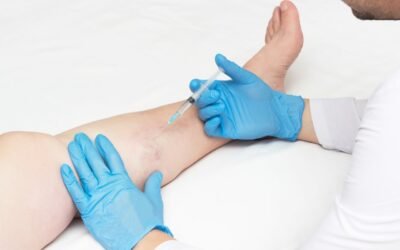Spider veins, those tiny, web-like groups of red or blue veins that frequently show up on the legs, can be an uncomfortable and embarrassing condition. A popular and efficient method to lessen the visibility of spider veins is laser therapy. But for results that endure and to keep healthy veins, it's crucial to stop them from returning following laser treatment. This post will go over some important advice and details on how to stop spider veins and
do spider veins come back after laser treatment.
Understanding Spider Veins and Laser Treatment
Understanding Spider Veins
Small blood arteries called spider veins can be seen just below the skin's surface. Numerous factors, including heredity, hormone changes, pregnancy, and extended durations of standing or sitting, can contribute to their development. Even though these veins are typically not a health problem, they can be uncomfortable and lower self-esteem.
Laser Treatment for Spider Veins
A minimally invasive process used to treat spider veins is laser therapy, also referred to as laser ablation or laser therapy. It functions by directing a focused beam of light at the troubled veins, making them dwindle and eventually vanish. With little downtime, this operation is typically safe and well-tolerated.
Preventing Spider Vein Recurrence
Compression Stockings
One of the most efficient strategies to stop spider veins from reappearing after laser therapy is to wear compression stockings. These carefully made stockings exert mild pressure on the legs, enhancing blood flow and lowering the possibility of developing new spider veins.
Regular Exercise
Engaging in regular physical activity, such as walking or swimming, helps promote healthy blood circulation. It also strengthens the muscles that assist in pumping blood from the legs back to the heart, reducing the likelihood of spider veins returning.
Maintain a Healthy Weight
Being overweight or obese can put extra pressure on the veins in your legs, increasing the risk of spider veins. Maintaining a healthy weight through a balanced diet and regular exercise can significantly lower this risk.
Elevate Your Legs
Elevating your legs whenever possible, especially after prolonged periods of sitting or standing, can help reduce pressure on your leg veins. This simple habit can go a long way in preventing spider vein recurrence.
Avoid Prolonged Standing or Sitting
If your job requires you to stand or sit for long periods, take breaks to walk around and stretch your legs. Changing your position regularly can prevent blood from pooling in the veins.
Hormonal Management
Hormonal changes, such as those that occur during pregnancy or with the use of birth control pills, can contribute to the development of spider veins. If you are susceptible to spider veins, discuss hormonal management options with your healthcare provider.
Conclusion
Spider veins can be unsightly, but with laser treatment, their appearance can be substantially diminished. But it's essential to take action to stop them from happening again. Wearing compression stockings, leading a healthy lifestyle, and shielding your skin from too much sun exposure are just a few easy ways to drastically lower your chance of developing new spider veins.
What type of doctor treats varicose veins? And remember that maintaining consistency in these preventative actions is essential for maintaining the finest long-term results for your legs following laser therapy. For specific guidance on preventing and treating spider veins, always speak with a medical expert.


